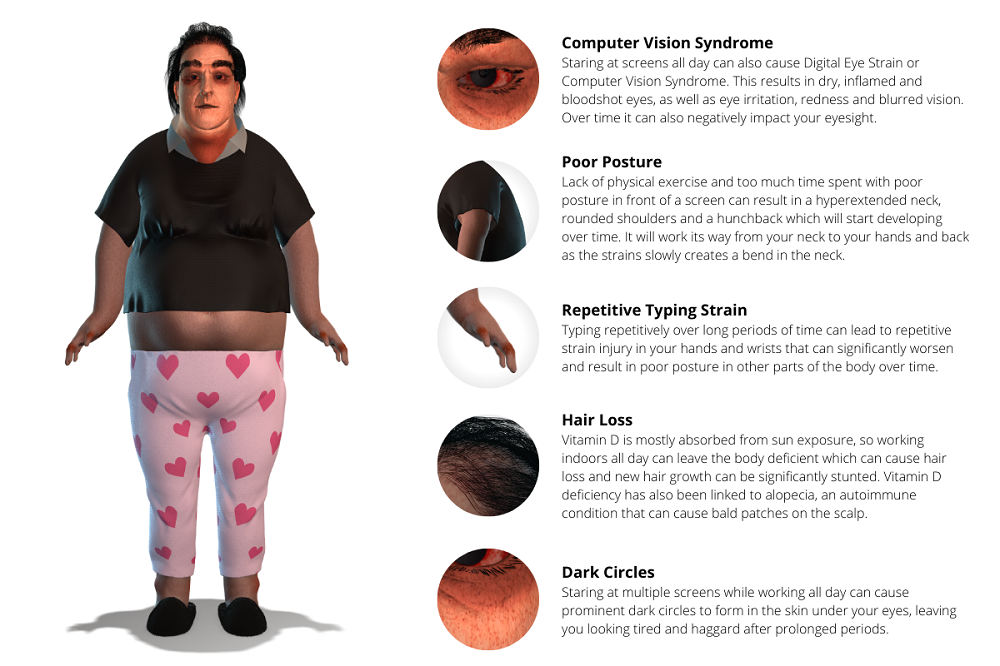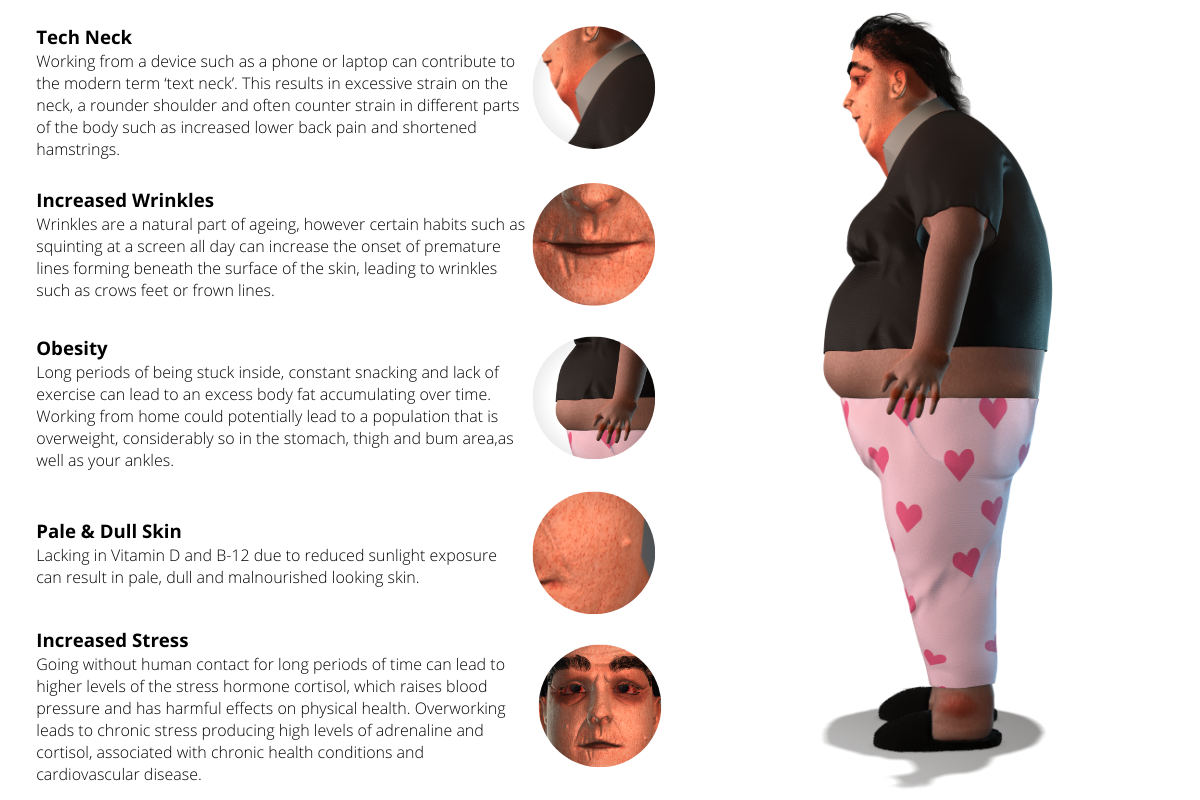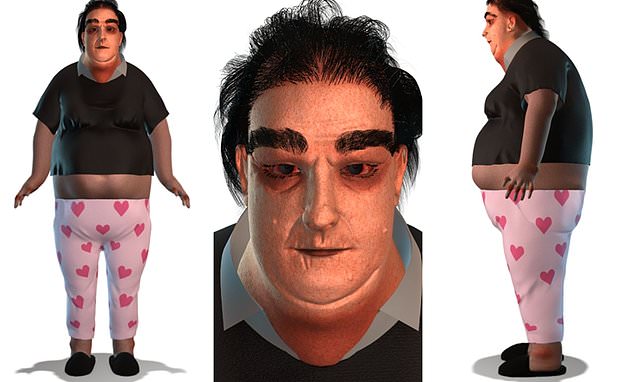Scientists have been working a model which depicts how the remote workers will be looking after twenty-five years from now. They have revealed terrifying images of the remote worker in the year 2045.
A team of clinical psychologists and fitness experts has represented a scary and horrifying rendering of “The Homeworker of 2045” naming Susan.
Susan suffers from ‘tech neck’, hair loss, poor vision, obesity, and terrible posture. It is mainly because of staring at a computer screen all day long.
Coronavirus lockdown has brought some extra periods of sleep and comfortable attire during working times. But we didn’t realize that could mean the benefits are far outweighed by long-term physical effects on our body.
As depicted by job experts DirectlyApply spokesperson:
“With lockdown having forced people across the globe into what has been the world’s largest remote working experiment, our usual interpretation of the perk has been transformed forever”
Susan has been outlining many physical implications of what could happen to our physical and mental well-being. If we spend hours glued to your laptop more than the desired duration. What if we reduced social interaction and lack of proper exercise?
Meet Susan! Job experts DirectlyApply have created the model depicting what we could look like if we worked from home permanently

Let’s take a look at the various problems faced by Susan and other unfortunate home workers in the world of 2045.

Dr. Matthew Gardiner, an ophthalmologist with Massachusetts Eye and Ear Infirmary, advises taking a break from electronic screens every 15 to 30 minutes, just for a minute.
‘Look away from the screen. Do something else, and refocus on a distant target,’ he said.
Eye experts recommend taking breaks from the screen and sitting about two feet away from a computer screen will help a lot. Also reducing the glare with softer lighting and making sure prescriptions are up to date if we wear glasses.
The coronavirus lockdown is a good time to start regular workouts to get rid of bad posture and symptoms of frailty. Getting up and moving around every 30 to 40 minutes is recommended.
‘Even if you’re comfortable, you should never sit in one position for more than an hour,’ –
says Hospital for Special Surgery (HSS) in New York.
The NHS recommends maintaining good posture at work, taking regular breaks from long or repetitive tasks. Also making sure our work seat, keyboard, mouse, and screen are positioned so they cause the least amount of strain.
To avoid tech neck, Dr. Daniel Riew, Professor of Orthopedic Surgery at Columbia University Medical Center in New York, says we should get up from our chairs and move around as frequently as possible.
‘If you have a sedentary sitting job, at least every 15 to 30 minutes, you should get up and walk around, even if it’s for a minute,’ he said.
‘Studies show that sitting for long periods is dangerous to your heart and that it leads to a shortened life span.’
While we are working indoors which do not expose ourselves to sunlight. Thus, resulting in absorbing less vitamin D – which eventually causes hair loss.
Combining a lack of vitamin B-12 with a lack of vitamin D can result in pale, dull, and malnourished looking skin.
Working from a device such as a phone or a laptop can contribute to tech neck – an abnormal curvature of the cervical spine

According to the Mayo Clinic research center in the US, we can avoid the baggy eye look by cutting down on fluids. Especially before bedtime and reducing salt in our diet, avoiding smoking, and getting enough sleep.
For the majority of the adults, seven to nine hours per night is recommended. Dark circles caused by fluid retention in our lower eyelids usually go away when we get up.
Working from home may also mean it’s tempting to head to the fridge and the cupboards every hour or so. Which strongly leads to the accumulation of fat causing obesity.
Gaining all the above features will surely be a reason for your stress. Stress is something that causes harmful effects on physical health. Higher levels of stress hormones mean an increase in blood pressure.
We mustn’t forget to check in with our colleagues and friends through a video chat and try to get out to meet friends and members of the local community when social distancing guidelines deem it safe.
This is just a demo for all those who work from home. But we know that we can keep up the healthy habits and daily schedule routines for our better future. There is no need for panic. We have time, we can do, we will do.









